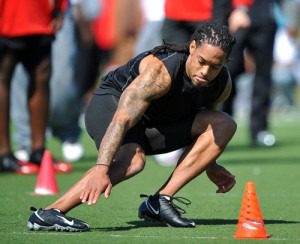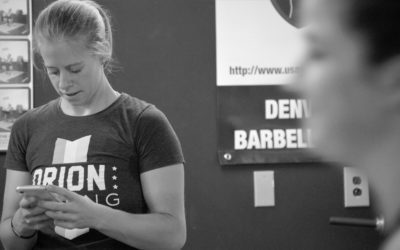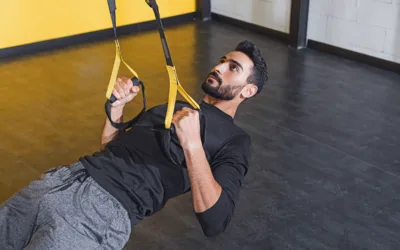Single Leg Workouts to Build Speed and Explosiveness
TOPIC: Speed & Agility | Sports Performance
Everyone wants to know the secrets behind a faster 40-yard dash time and a quicker pro-agility drill mark.
They’re all searching for the dynamic speed drill to increase their velocity and the elusive top-end speed routine that will knock off those two seconds and destroy that pro-agility drill that will only leave coaches, scouts and other contemporaries exclaiming in profanities. So where is this magic pill to elevate that potential and unlock speed you ask?
Well, unfortunately, there is no quick fix or potion for building faster athletes for the game of football. Sorry.
 However, there are multiple qualities that come into play when developing raw football speed. A coach or trainer must consider developing an athlete to aggressively accelerate, obtain the skill to decelerate, change directions quickly, and lastly, create a “warrior mentality” to fight for every inch. Being highly competitive, hard-hitting, and more than willing to engage in one-on-one combat has more to do with sheer football speed than any quick fix drill you might find. On top of the various components that come with developing speed, there is still one underrated answer to the question, “How do I get faster for football?” Answer: simply get stronger on one leg. Yes, that’s it.
However, there are multiple qualities that come into play when developing raw football speed. A coach or trainer must consider developing an athlete to aggressively accelerate, obtain the skill to decelerate, change directions quickly, and lastly, create a “warrior mentality” to fight for every inch. Being highly competitive, hard-hitting, and more than willing to engage in one-on-one combat has more to do with sheer football speed than any quick fix drill you might find. On top of the various components that come with developing speed, there is still one underrated answer to the question, “How do I get faster for football?” Answer: simply get stronger on one leg. Yes, that’s it.
There are a number of sprint routines and position-specific drills that will enhance a player’s potential but the best way to ensure success is to build single-leg strength. So why is single-leg strength training the best for achieving maximum speed and velocity? Let’s first look at and understand the art form of biomechanics and the technique of sprinting. Sprinting is a single leg movement, so the obvious would be to train on one leg. Secondly, it enhances agility movements, strengthens glutes, and stabilizes hip abductors used in single leg movements – which are vital for deceleration. Next, it recruits more muscle fibers to build stronger legs, without placing overload on the spine. Which also aids in injury prevention and knee stabilization. And finally, which is often overlooked, it enhances balance and hip flexibility.
 Just as with any training program, a plan of progression and proper sequence must be followed to reap the success and benefits of single-leg training. Progression and sequence should start with bodyweight exercises during the first three weeks of training at an 8, 10, or 12 repetition scheme cycle before any type of load is added. Once the athlete has demonstrated a mastery of movement patterns, then add external loads. More experienced athletes however, may not need a full three weeks before adding resistance. Always start with dumbbells before preceding to using a barbell. Below are a few of my recommended single leg exercises to incorporate into your speed and lower body training:
Just as with any training program, a plan of progression and proper sequence must be followed to reap the success and benefits of single-leg training. Progression and sequence should start with bodyweight exercises during the first three weeks of training at an 8, 10, or 12 repetition scheme cycle before any type of load is added. Once the athlete has demonstrated a mastery of movement patterns, then add external loads. More experienced athletes however, may not need a full three weeks before adding resistance. Always start with dumbbells before preceding to using a barbell. Below are a few of my recommended single leg exercises to incorporate into your speed and lower body training:
Utilizing single-leg movements is the secret to athletes being fast and agile. In game situations, athletes are required to push off one leg from both the parallel and split stance, pretty much a majority of the time. So for training to transfer over to real-time atmospheres, single-leg movements must be employed.
You cannot eliminate all double-leg lifts; as football players are often placed in situations requiring to root the feet and push while both feet are planted during the course of a game. Using single-leg accelerated or decelerated movements will have a direct effect on improving overall game speed, maneuverability, and an increase in functional strength.
- Jumping split squats
- Lateral squats
- Pistol squats
- Weighted step-up movements
- Reverse/Forward lunges
- Bulgarian squats
- Walking lunges
Find Your Perfect Training Plan
Sometimes all you need to reach your destination on your fitness journey is an expert guide. Look no further, we've got you covered. Browse from thousands of programs for any goal and every type of athlete.
Try any programming subscription FREE for 7 days!
Related Articles
You May Also Like...
32 & Lifting: Reflections on My First Powerlifting Competition
Stepping onto the powerlifting platform at 32, just 13 months post-ACL surgery, Fred Ormerod chronicles his return to competitive sports after a 14-year hiatus. From shedding over 15kg to meet weight class requirements to confronting self-doubt and embracing the...
Effective Ways to Coach At-Home Athletes
Transitioning to remote coaching presents unique challenges for strength and conditioning coaches, especially when athletes lack access to standard gym equipment. Effective communication and creative programming are essential to maintain engagement and ensure athletes...
Working Out During Ramadan: Maintaining & Making Gains
It’s falsely believed by many Muslim athletes that Ramadan = losing progress (gains!). This isn’t the case if you train, fuel, hydrate, and sleep appropriately. Of course that’s easier said than done, but following a few of these strategies can make all the difference...
32 & Lifting: Reflections on My First Powerlifting Competition
Stepping onto the powerlifting platform at 32, just 13 months post-ACL surgery, Fred Ormerod chronicles his return to competitive sports after a 14-year hiatus. From shedding over 15kg to meet weight class requirements to confronting self-doubt and embracing the...
Effective Ways to Coach At-Home Athletes
Transitioning to remote coaching presents unique challenges for strength and conditioning coaches, especially when athletes lack access to standard gym equipment. Effective communication and creative programming are essential to maintain engagement and ensure athletes continue to progress in their training.

Want more training content?
Subscribe
For Coaches
For Athletes
About
Support
Training Lab
Access the latest articles, reviews, and case studies from the top strength and conditioning minds in the TH Training Lab!
Made with love, sweat, protein isolate and hard work in Denver, CO
© 2024 TrainHeroic, Inc. All rights reserved.





